

Join Rachel McShane, Tia Jeter, Kevin Jensen, and Spencer LaBelle at the Institute of Scrap Recycling Industries (ISRI’s) Spring 2023 Safety & Environmental Conference (ISEC), May 16-18, in St. Louis.
ISEC is the most comprehensive source of up-to-date information and guidance concerning safe operations and environmental compliance in the recycled materials industry. EHS and Operations professionals from across the industry share lessons learned, best practices, and much more.
Come learn from the industry leaders in EHS and operations, participate in Q&A, offer your expertise to others in open discussions, and leave with actionable plans to implement in your organization. Conference topics will include:
Click for more conference details and registration information
Join SCS Engineers professionals at the 2023 Annual Florida Brownfields Conference, June 19-21, at Avanti International Resort in Orlando, Florida.
The Florida Brownfields Conference always brings great information from industry experts. The Call for Abstracts was extended through Friday, May 19. Organizers are seeking presentations on
Registration is now open. For registration information and more details as the conference takes shape, click here.
Hope to see you there!
Visit SCS Engineers professionals at BOOTH 60 at the 2023 Louisiana Environmental Conference and Trade Fair, March 15-17, at the Cajundome & Convention Center in Lafayette, Louisiana.
The conference will feature many presentations and opportunities to learn from industry experts, as well as several networking opportunities including a golf outing, opening reception, and crawfish boil and fish fry.
The conference is hosted by the Louisiana Solid Waste Association.
Landfill owners, operators, and engineers have long dreamed of using landfill acreage for more than disposal. Many disposal companies and municipalities are already planning to control waste rather than seeing it go into landfills or using less sustainable plans to truck it far away. Those dreams are becoming a reality using sustainability and solid waste master planning. Coupled with new recycling and reuse technologies and organizational coordination, our speakers are making the evolution happen.
Thursday, April 6
2:00 pm Eastern Time, for 1 hour
Learn More and Register for Sustainable Directions in the Waste Industry Here
CAN’T MAKE THE LIVE SESSIONS? NO PROBLEM. RSVP, AND WE’LL SEND YOU THE RECORDING.
We hope you can join SCS Engineers for our next client webinar and open forum. Feel free to share this invitation with others interested in learning more about what leading organizations are doing to become more sustainable.
We encourage you to share this invitation – please do not share your Zoom registration confirmation – it is unique to you for Certificates of Attendance.
Learn More and Register for Sustainable Directions in the Waste Industry Here
Hear from SCS Engineers experts at the ninth Global Waste Management Symposium in Indian Wells, California, February 25-28, 2024. SCS is also is a Silver Sponsor of the conference.
The GWMS serves as a forum to discuss applied and fundamental research, case studies and policy analysis on solid waste and materials management. The community of researchers, engineers, designers, academicians, students, facility owners and operators, regulators and policymakers will participate.
Numerous SCS Engineers experts will be on hand to discuss your solid waste management challenges, and several are presenting at the symposium, including:
The Environmental Research & Education Foundation (EREF) is a strategic partner of the symposium.
Click here for schedule, registration, and other conference details
Hope to see you there!
Energy costs are becoming more important to your bottom line due to inflation, energy shortages/increased global demand, tightening environmental regulations, growing corporate sustainability goals, and climate change challenges. Those companies with an effective energy management program that have reduced energy costs and reinvested savings in new energy projects could have a considerable competitive advantage.
An energy management program supported by owners, management, operators, and staff is more likely to select efficient choices that minimize life-cycle cost, provide a return on investment (ROI), and maximize profits. SCS has mechanical, electrical, industrial, and environmental energy professionals nationwide who understand how to achieve more efficient production using electricity, conventional/renewable fuels, and water in industries.
Specifically, SCS has over 100 years of cumulative ammonia refrigeration experience regarding operations, design, maintenance, compliance, energy audits, commissioning and retro-commissioning, system assessments, energy modeling, equipment selection, and control systems.
The following steps illustrate a tiered approach to energy management for ammonia refrigeration facilities:
Onsite Energy Audit
SCS professionals with decades of experience working with refrigeration and energy-consuming systems conduct the onsite audit. The visit includes working with the facility staff to evaluate day-to-day operations; learn about the state of equipment and plans for changes; obtain energy use and utility cost data; gain insight into energy demands and controls systems; and conduct a plant walkthrough. During the walkthrough, SCS may use portable data loggers, infrared thermal imaging, or other tools to supplement staff knowledge to help quantify energy conservation measures.
Findings Report
The main deliverable of the onsite audit is the audit report. SCS provides a detailed audit report with our findings, observations, and possible system modifications. These could include but are not limited to pressure adjustments, equipment additions/alterations, control systems, operation schedule modifications, etc.
Engineering Report
Follow-up steps may involve detailed engineering recommendations for implementation. These can include evaluating and selecting alternative equipment, systems, and controls; calculating future energy consumption, costs, and savings; and checking to verify that changes do not create negative side effects.
Training
SCS supports the implementation phase of the findings by providing operator training. Training is key ─ operators then understand what changes to expect and why. Operator “buy-in” is a key element for the long-term sustainability of energy management programs.
Rebates & Incentives
To improve a project’s ROI, facility personnel should take advantage of local and federal incentives. SCS can help coordinate with the local utility to determine if the facility can use rebate programs and provide calculations to support estimated energy savings.
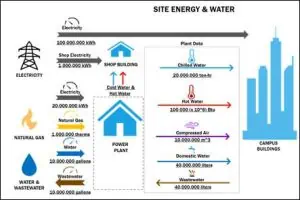
SCS helps our clients make sustainable energy management plans and sound investment decisions based on objective energy audits, assessments, and energy modeling. If you’d like to learn more about our facility energy management capabilities, visit our website or contact us at .
About our Authors:
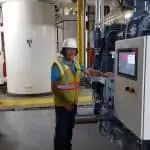

Environmental due diligence is a form of proactive environmental risk management typically conducted before purchasing, selling, or leasing a property or business. Due diligence investigations can help prevent costly environmental liabilities by identifying them early in the transaction, thereby protecting all parties’ interests. There is an increased opportunity for significant cost-savings when the hired consultant accounts for tangential aspects during their investigation.
Environmental due diligence encompasses tangential aspects that are not the primary focus of the investigation. Aspects such as these may indirectly impact the environmental risks or liabilities associated with the property or business or the transaction’s overall feasibility or value.
Tangential Aspects of Environmental Assessment: A Case Study
A major oil company requested environmental due diligence for a large property acquisition. The property acquisition was part of a larger company acquisition and involved hundreds of oil and gas well locations, facilities, tanks, and equipment. It was necessary to modify the Phase I assessment for the work. Of the hundreds of well locations, 50 were chosen for Phase I work and field verification. According to the consultants, any environmental liabilities exceeding $2 million must be identified during this evaluation. Phase I examined the locations of wells for potential environmental liabilities, such as petroleum releases, but did not examine the wells themselves. Even though the consultants were experts in evaluating the condition of oil and gas wells, the oil company addressed this aspect of the investigation in-house. The company did not consider the tangential legal implications, liability for plugging costs, potential impacts on property value, and potential penalties for non-compliance with regulations.
Many wells excluded from the consultants’ due diligence were over 50 years old and out of operation. The company’s in-house investigators did not perform a field review. The result was an underestimation of the number of wells that required plugging and their associated costs. The estimate for plugging a well was between $20,000 and $30,000 per well. The plugging costs for this transaction were much higher, ranging from $80,000 to $120,000 per well, resulting in a $42 million increase. The oil company made a mistake in thinking the plugging costs were insignificant. Environmental due diligence should always include tangential factors.
Additional examples of tangential aspects of environmental due diligence might include the following:
The information obtained during or upon completing an investigation can inform negotiations and contractual arrangements between the parties involved in the transaction. Environmental consultants could spot some issues big enough to kill a deal. Other issues may allow buyers to adjust the purchase price or negotiate an indemnity to shift financial responsibility for environmental risk. It may also be possible to purchase environmental insurance for sufficient financial protection.
The specific steps involved in environmental due diligence depend on the type and scope of the transaction, as well as any applicable regulations or guidelines. Consult an experienced environmental professional to ensure that your due diligence process meets all your needs and requirements. Find out more about SCS’s environmental due diligence services.
With climate change becoming a center of attention globally, much focus has pointed toward carbon capture and storage (CCS) in recent years. While USEPA has published general guidance for Class VI permitting, it is still a new permitting challenge for both scientists and regulators alike. Drawing on lessons learned from more familiar and well-developed regulatory frameworks will be beneficial.
In our Technical Bulletin, Applying Lessons Learned From Municipal Solid Waste and Coal Combustion Residuals to the Development of Testing and Monitoring Plans for CO2 Storage Projects, we focus on the testing and monitoring aspect of Class VI permitting and related complexities, including the project’s overall scale, enhanced costs, and enhanced regulatory risk. We discuss the key considerations for developing an effective CCS Testing and Monitoring Plan based on lessons learned from developed MSW and CCR monitoring programs, as well as how early planning and good judgment can help navigate the complexities associated with CCS projects and ultimately reduce those complexities and associated project costs.
Recommendations include meticulous site characterization efforts early in the CO2 storage project and tailoring the monitoring network. The latter includes placing monitoring wells based on multiphase modeling predictions, designing geochemically and geomechanically compatible monitoring wells, and using strategic statistical techniques to analyze and interpret monitoring data.
It is important to remember that for CO2 storage, groundwater monitoring is not intended to be the primary monitoring method for detecting fluid leakage and migration. It is only one of many required testing and monitoring methods. Even so, the monitoring network must be planned and established appropriately and then tightly coordinated with the other testing and monitoring methods to maximize the protection of underground sources of drinking water.
SCS Engineers will continue to post timely information, resources, and presentations to keep you well informed. These include additional guidance, industry reaction, and webinars with our teams using our website, on SCS Engineers LinkedIn, and on SCS YouTube on-demand forums.
Additional resources at your fingertips:
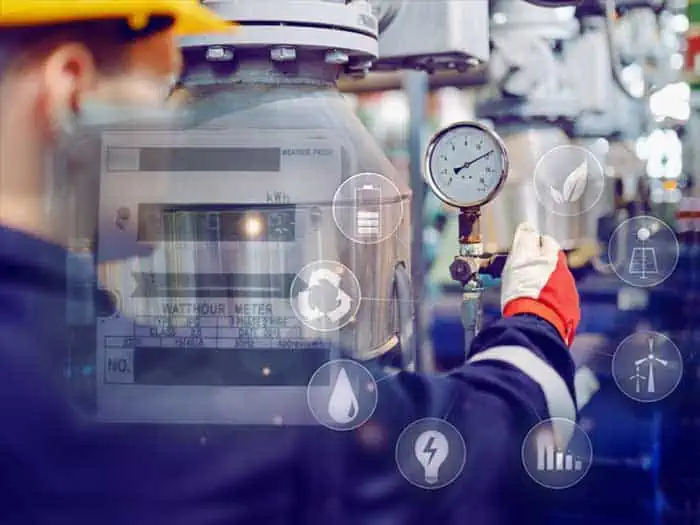
Energy Savings Add Up – Improving Industrial Carbon Footprint
Businesses know they can significantly improve their bottom line by reducing operating costs. One way to reduce costs and carbon footprint is through energy efficiency upgrades – particularly in an industrial environment. Energy cost savings directly impact the bottom line and can increase profit margins. For example, 5% to 15% annual energy cost reductions can be realized by conducting a retro-commissioning project to optimize your facility’s mechanical systems. The up-front cost of the retro-commissioning project is normally within a 1 to 2-year simple payback. So, to realize these financial benefits, here are some general tips demonstrating the benefits of implementing energy cost-saving projects.
Let’s start with a simple example. Say a company has a net profit of 5% and would like to increase its net profit. There are generally two ways to do this; either increase revenue or decrease costs. If your business were to look at reducing costs by implementing an energy project that would save them $1,000 annually, that would be equivalent to otherwise earning an additional $20,000 in revenue ($1000/0.05 = $20,000). An energy efficiency project of this type has the same impact on profits as increasing sales 20:1.
If the energy project has a return greater than the borrowing rate, then you can finance the project, and you may improve cash flow with relatively little risk. Let’s say a business finances an energy project with a $100,000 loan for 15 years at an interest rate of 10%. Your business has no up-front cost, but pays ~$13,100 each year for 15 years. The energy project you were considering was calculated to generate ~$14,900 each year in annual energy cost savings. Since the energy cost savings exceed the financed payments, the project exhibits a net-positive cash flow of $1,800 annually with no upfront costs.
Simple payback is an important financial consideration under many circumstances in conjunction with the Internal Rate of Return (IRR). If an energy project has an IRR greater than your business’s profit margin, energy cost-savings projects are where you should invest money. For example, suppose a business has determined they will consider energy projects with a 2% return above their net profit of 4.0% (i.e., anything >6.0%). In that case, an energy project with a lifespan of 20 years and an IRR of 6.5% fits their financial goals. In this scenario, the project’s simple payback is irrelevant to the goal of returning an established minimum IRR. Had the company insisted on a 2- to 3-year simple payback, an opportunity that could have far exceeded their financial expectations, would have been overlooked.
Consider looking at energy costs differently than currently viewing them. Energy savings realized from a potential energy project are conversely an existing waste stream (a penalty). By doing nothing, the excess energy consumption continues to drain your operating cash every month, not to mention the impact on your carbon footprint. Reducing energy costs and eliminating energy waste can add to a business’s operations’ efficiencies and impress shareholders looking for a lower carbon footprint.

How can you realize energy and cost savings benefits without knowing where to turn next? The first step under the umbrella of energy management is to perform a formal study to identify energy savings opportunities accomplished through an Energy Assessment. The Energy Assessment looks at how energy is consumed at your facility and, through the formal process, will provide you with the fundamental knowledge you need to make a case for implementing energy cost-saving projects. From there, you can work with the decision-makers to prioritize energy savings in your business. Below are a few ideas that may make sense for your business and lower your carbon footprint:
Building system performance can decline, and energy consumption can increase over time, even when performing routine maintenance on equipment. However, you can increase productivity, improve work environments, and reduce maintenance costs while saving money by conducting an energy assessment and investing in your business’s discovered energy savings opportunities.
About the authors:
Sam Cooke, PE, CEM, is a Vice President and Project Director at SCS Engineers. He has over 40 years of engineering experience specializing in manufacturing energy management assessments and implementation projects. Sam was the technical lead for projects involving the performance of energy assessments at over 100 manufacturing companies, including compressed air audits, compressed air leak surveys, process heating assessments, manufacturing HVAC assessments, lighting assessments/replacement, refrigeration efficiency assessments, etc.

SCS Engineers specializes in industrial energy assessments and water conservation evaluations. For more information, please get in touch with Sam Cooke PE, CEM, Tony Kriel PE, LEED AP, or
Additional Resources:
What’s Environmental Consulting?
Jackie Rennebohm stands on a landfill in Madison, Wisconsin, pops open a monitoring well, bails some water, and dumps it on the ground while a cluster of neighbors looks on. They see she had no qualms about coming into contact with the liquid— it’s what a young professional does in a day’s work, she tells them.
“I explain that we strategically place the wells to monitor for contaminants that could leak from the landfill but let them know the site is lined for protection. In 30 years, there’s been no detection of pollutants from the landfill,” Rennebohm says.
She’s upbeat, sincere, and informative; they are interested and feel confident in her explanation of landfill science and engineering. Being a good neighbor is a goal of every landfill.
Gaining trust can go a long way on the job and is something Rennebohm has always prioritized. She figures it’s played a big role in her ability to climb the ropes at SCS Engineers and to offer her clients and project managers what they need—that and her attention to detail and her thirst to keep learning.
Her earliest charge as a new geology graduate seven years ago was logging soils and documenting details for groundwater management. She quickly began learning about different soil types; how to classify them; the features of each that affect their ability to carry contaminants; and how and where those contaminants might migrate.
Moving into new territories
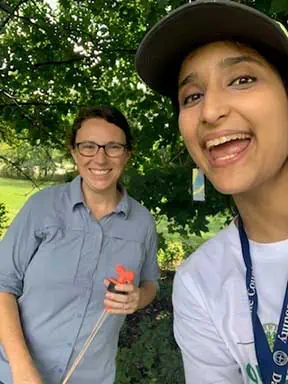
As she’s developed in her career, she’s taken on greater roles and now owns more parts of larger environmental consulting projects.
Beyond monitoring groundwater at landfills and water in nearby private wells and reporting her findings to regulators, the ambitious scientist dedicates her time to the remediation of real estate properties. She begins with Phase 1 Environmental Site Assessments (ESAs), scrutinizing topographic maps, soil maps, investigation reports from local regulatory agencies, and other historical data to determine if a property likely has hazardous contaminants. Depending on her findings, she digs deeper, conducting a Phase 2 ESA by testing soil and groundwater to confirm if the site is contaminated.
“I like doing Phase 1 Assessments, especially because they really challenge you to be meticulous in identifying issues that could be material concerns. You can’t miss a single detail, or an issue could come up later that could cost time and money for our clients.”
“Developers make huge investments, and if it were mine, I’d want to know I hired someone who will be as conclusive as possible.”
If Rennebohm’s due diligence confirms contamination to resolve, she transitions to remediation planning mode.
“That’s when we move from investigator to developing a sound strategy to protect the health of the neighbors, the environment, and the property developer’s bottom line,” she says.
The plan may entail removing or cleaning impacted soil and, in some cases, installing a vapor barrier to prevent volatile gases from migrating into buildings. The solutions are unique to each site, ensuring the groundwater stays pristine and any new structures are in healthy environments.
She’s gotten good at getting to the route of a problem and coming up with an action plan leveraging conceptual site models. She relies on these models to form a hypothesis, gather data, and then does more research to build on her initial findings. With that comes more knowledge to piece the puzzle together ultimately. “I might start by looking for potential groundwater contaminants, then work to determine where those contaminants would likely move downgradient. Once I collect enough preliminary data about the subsurface, I can form a scientific hypothesis. The deeper I go, the closer I get to having answers to inform possible next steps,” she says.
It takes a keen eye
One of her college professors would say that the best research geologist sees the most rocks. In her eyes, it’s the same principle as being the best environmental consultant.
“It’s about being out there and physically looking at soil sample after sample and analyzing groundwater in multiple scenarios. You get a solid understanding of site conditions across different parts of the state, weighing many variables. The more you observe, the more you learn, and you apply that learning in the field,” she says.
Expanding her knowledge and showing what she can do with it has been key to advancing in her career – and it ties into that priority she broached earlier: gaining trust.
She says you must show your project managers you are ready to work on more environmental consulting tasks.
“It’s been important to my supervisors to see that I understand the conceptual site model to know where we are starting with a project and where we need to go to reach the end goal. As important is offering ideas for how to get there instead of waiting to be told what to do. It’s rewarding that my team trusts my judgment.”
From researcher to environmental consultant
Rennebohm’s found her sweet spot in environmental consulting.
“In school, I really liked geological research, learning about life, time, processes, and change. Research is important, though I also enjoy working in the field to help make meaningful changes. It’s gratifying to see blighted properties transform into valuable assets with purpose. Or to be part of a team drawing up a proposal and winning it. You own your work, and it’s a proud feeling,” she says.
She’s left to run with more these days. She serves as the primary author and reviewer of large environmental reports when she formerly contributed short summaries. And she spends more time with clients than in the days when she’d make a quick call from the field to brief them on one point in the big picture. Now Rennebohm’s their point of contact for scheduling requests, coordinating work, writing proposals, and preparing quotes.
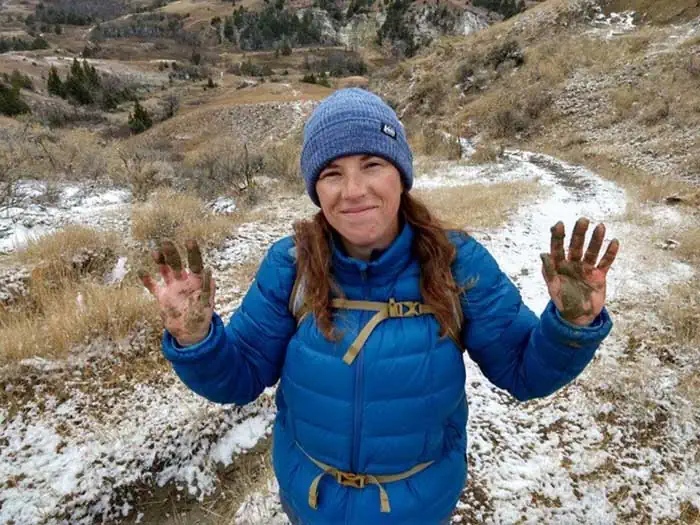
What’s ahead
“I see myself doing a lot more on the client relations side. I like interacting with them and coordinating the work needed to meet their goals,” she says.
And she wants to venture further into another territory: business development, a space she hadn’t envisioned herself entering a few years ago.
“While I have a customer service backbone, I thought, I’m a scientist, not a salesperson. But I think differently now that I’ve grown at SCS.”
She’s networking at business conferences and meetings, explaining to residents the important roles of landfills and telling developers how consultants who do environmental site assessments can help them protect their investments.
“I’ve come to realize business development isn’t exactly selling. It’s listening, then working with people. It’s providing clients with the insight to reach their goals,” she says.
Environmental consulting builds mental dexterity. She believes that branching out into more roles and working with more people helps build character.
“I’m becoming more open-minded and breaking out of my shell, and I can contribute more to the big picture. In all I do, I’m working to protect people and the environment.”
Contact SCS Engineers to join our professionals with rewarding careers. in environmental consulting.